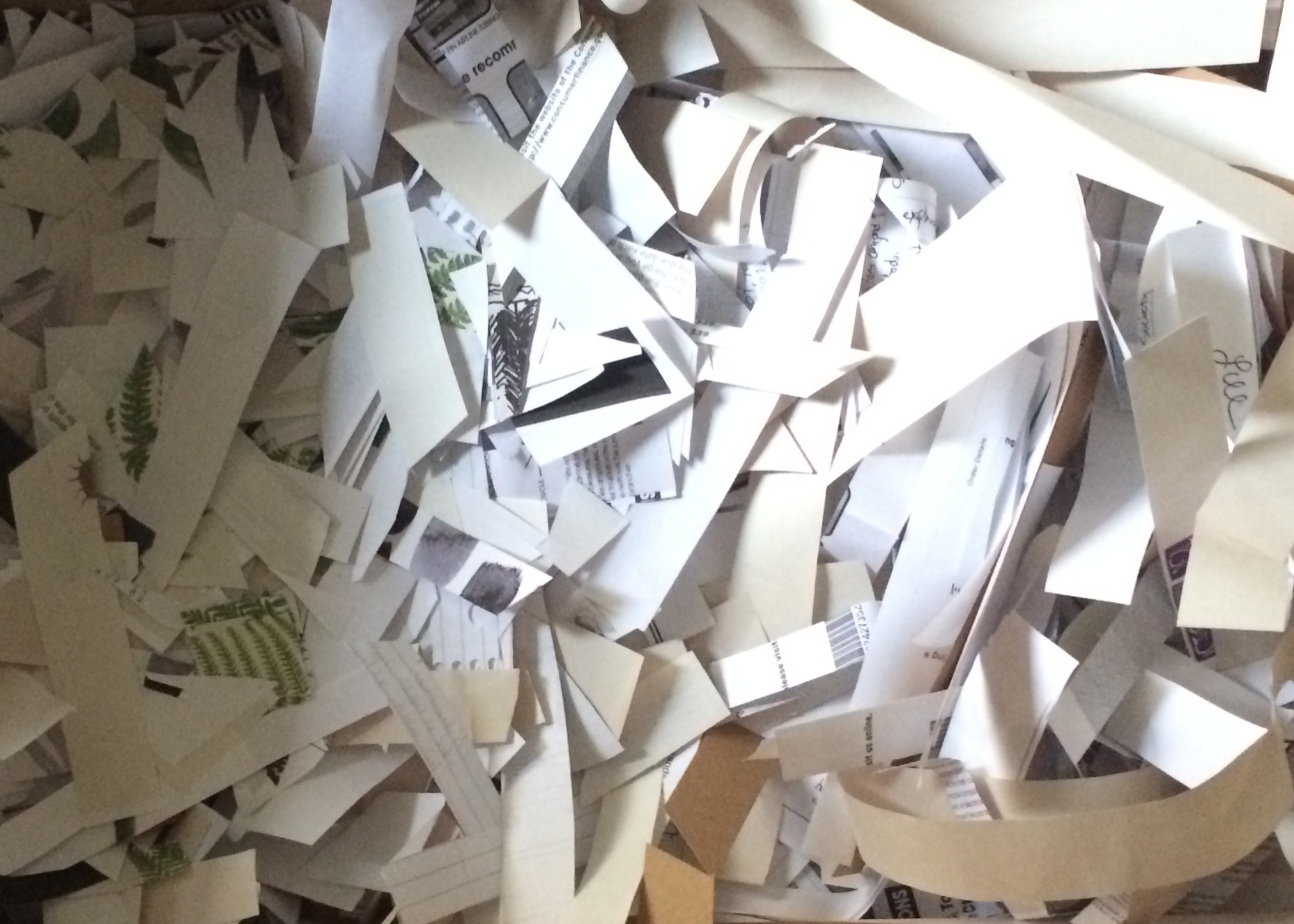In previous zero waste hamster posts, I covered different types of hamster bedding. At the time, I didn’t say much about shredded paper. I left it at talking about its absorbency. However, I decided I wanted to give it a try in response to one of my easily bored hamsters. Peach is a lovely Syrian hamster, but she has recently become even more difficult to entertain. I’d love to write a post about it once we resolve some of her issues, but for now it suffices to say she gets bored easily.
Having used shredded paper bedding in emergency situations with other hamsters before, I thought that she may benefit from the unique texture and form of the paper, and I’d like to share what I found with you.
How-To
Gather paper
First, you’ll need paper to shred for your bedding. You should ensure that the ink used is soy-based if possible, as chemical inks may harm hamsters if eaten. Most newspapers use soy-based ink, and unprinted printer paper is always a safe bet. You can even use the edges of printed paper. I used papers that I already had in my recycling bin.
Shred!
Next up, shred away! If you have a shredder, you can use that. I don’t, as they’re expensive and I don’t really need one. If you plan to use paper bedding regularly, you could consider investing in a manual shredder for easy, electric-free shredding. However, I just stuck to my trusty scissors.
If you’re using scissors, you can choose the thickness of your papers. I decided to leave the paper strips a little thick, as they stood up better which made for an interesting environment for the hamsters to explore.

I like to also make some smaller paper-chip type things for the bottom of the cage, which you can see above on the left.
Use
Now all that’s left is to use it. I cleaned out the cage and filled half the cage with paper and half with my usual bedding. Now for some photos of the hamsters exploring!
Thoughts
As you can see, the hamsters had a great time exploring their bedding. It definitely made me rethink my outlook on paper bedding. Peach particularly enjoyed searching for her food among the paper.
PROS
Fun for exploring, holds tunnels well, good use of paper, can be composted after use, cheap, and involves no plastic.
CONS
Not very absorbent, chemical inks can be dangerous if eaten, requires paper–so only convenient if you regularly produce it–and requires some extra work.
Conclusion
I think the pros outweigh the cons for me. If you use the paper bedding in only some of the cage and away from your hamsters regular potty corner, you’ll be able to avoid most of the absorbency issues. It’s still important to clean more regularly, though.
We used mostly undyed paper and newsprint, and only used dyed paper in very thick strips that our hamsters wouldn’t be interested in chewing–this obviously depends on the hamster, though. It’s always better safe than sorry. We used paper from school assignments and handouts alongside paper leaflets included in our junk mail to make up our hamsters’ bedding.
Environmentally, I think using existing paper to supplement Carefresh bedding is a great idea. However, I don’t think switching entirely to paper bedding just to avoid the plastic is worth it. I cannot speak for other companies, but Carefresh uses sustainable materials for its bedding. Producing new paper requires a lot of energy, and so I think just using superior, sustainable small animal bedding is best for our planet in the long run. Maybe in the future boxed small animal bedding will become available, though!
Overall, I think paper in addition to another sustainable bedding choice is a great option for entertaining hamsters as well as for extending the lifespan of your paper. However, only reusing paper and not buying it for the purpose of hamster bedding seems to be the right choice.
This post contains affiliate links, and I may earn from qualifying sales.
